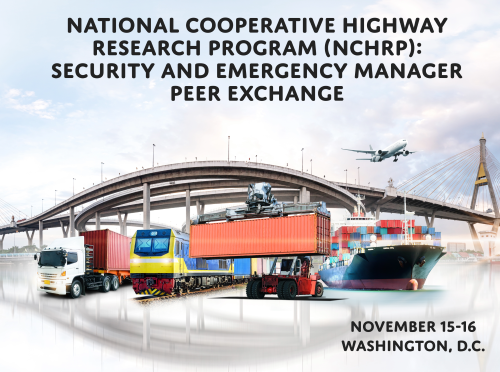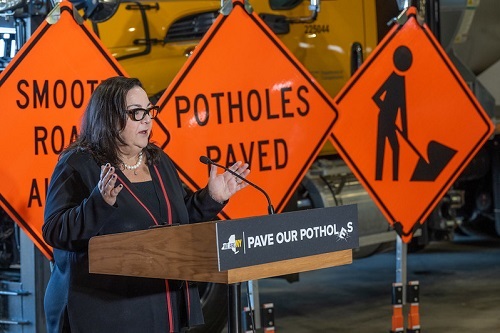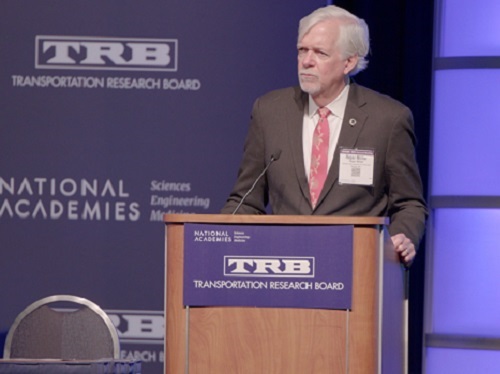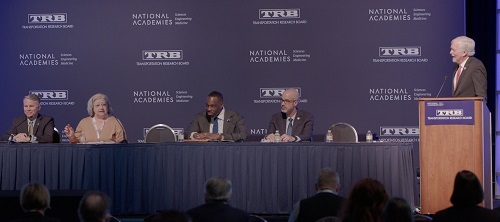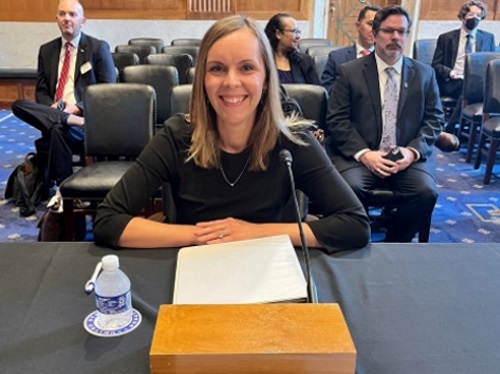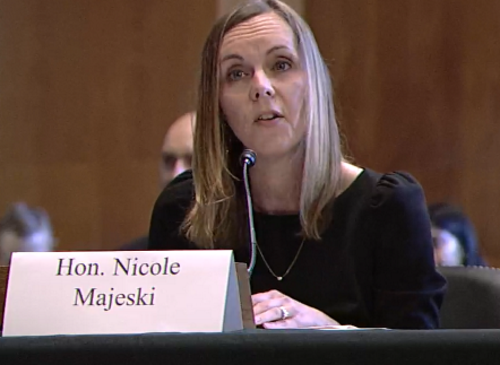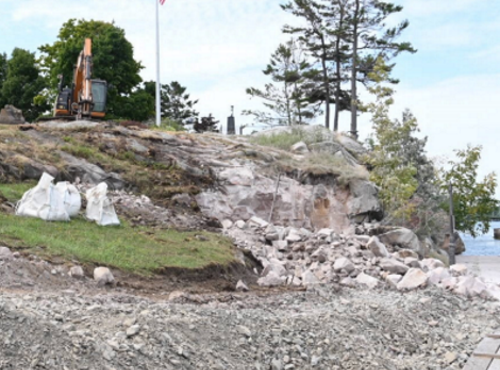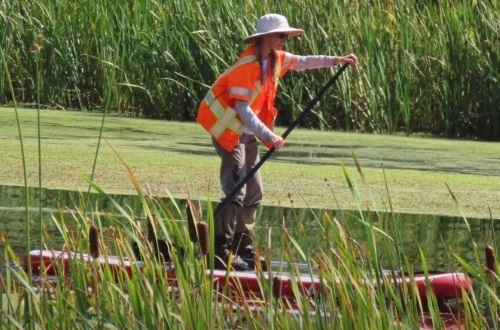Five state transportation agency executives shared their thoughts on how to make the nation’s mobility networks more resilient to a variety of challenges during a roundtable discussion at the 2023 Transportation Research Board Annual Meeting.
[Above photo by AASHTO]
Roger Millar – secretary of the Washington Department of Transportation – moderated the roundtable. He has also made improving resiliency a key emphasis area for his one-year term as the 2022-2023 president of the American Association of State Highway and Transportation Officials.
That session – entitled “Developing a Resilient Transportation System for a Rapidly Changing World” – featured four other state agency executives: Toks Omishakin, secretary of the California State Transportation Agency or CalSTA; Patrick McKenna, director of Missouri Department of Transportation; Marc Williams, executive director of the Texas Department of Transportation; and New Jersey Department of Transportation Commissioner Diane Gutierrez-Scaccetti.
“Resilience is a broad part of what we do in my world,” Millar said. “Many think of resilience in the context of climate change and natural disaster response, but to me, it is also about the need to prepare for and adapt to changing conditions such as shifting demographics, an aging population that will drive fewer cars, and economic changes such as moving from extraction industries like forestry and mining to technology and software companies.”
He said resilience also encompasses the need for transportation systems to become “smarter” as well. “Now we are moving to be stewards of our multimodal transportation system rather than builders,” Millar added. “There is no way that we can grow our highway system to keep up with increasing congestion and [travel and freight] demand – there is no way we can build our way out of this. So we need to think about our transportation infrastructure in smarter ways – ways to get more out of what we have. When we need to add capacity, we need to be strategic about it and multimodal about it.”
Yet when it comes to “smart,” that can mean many things, noted Gutierrez-Scaccetti.
“Being ‘smart,’ for example, is using glass-infused foam concrete for key bridge deck replacements,” she said. “That helps improve bridge decks while diverting glass from our landfills. It’s an example of doing all we can to use natural and recycled materials in our work to reduce our impact on the environment.”
Gutierrez-Scaccetti also emphasized that state DOTs today are taking a much more multimodal view of the transportation world versus the past – developing a broader range of transportation options for people and goods; options that give the overall system more resiliency.
“Transportation is a means to an end, so when we build today, we need to be more holistic about the process,” she explained. “When we build light rail, we look at it as a way to improve access while relieving congestion on our roads. We have to think differently to be successful.”
“Resilience is a huge topic state DOTs deal with every day,” echoed Williams. “If our system is unable to function during severe weather and other catastrophic events, then we’ve failed. Energy, emergency services, and food products desperately need an efficient and reliable transportation system, especially as we deal with more extremes in weather.”
From that perspective, planning for disaster is becoming an even more critical discipline for state DOTs. “One of the things we talk about is that the time to figure out what to do in a disaster is not when a crisis happens,” he said. “We must plan ahead in terms of coordination with other state agencies and local governments – and we must do it every year, as we always have new people coming into our organizations.”
That’s why McKenna emphasized that finding the next generation of transportation workers, while improving support for current employees, is absolutely critical from a resiliency perspective.
“It is very important to develop the next generation of transportation workers, whether they go into the public or private sector,” he stressed. “This is the generational challenge. It is so easy to look [at] how to fund capital improvements, but it can oftentimes be very difficult to find the right support for the people doing that work. If we do not support them, we will not have the resiliency we need.”
McKenna added that the total state DOT workforce nationwide consists of only about 200,000 employees who help run the vast multimodal expanse of the U.S. transportation system. “We have to be able to make an investment in the people that do this critical work,” he pointed out. “We must never forget they are the ones that are going to drive us forward.”
State transportation agencies must also never forget that safety must remain their number one priority as they work to make mobility systems more resilient, emphasized Omishakin.
“Everyone on this panel is very concerned about safety; just two states up here [California and Texas] represent 20 percent of all roadway fatalities in America,” he said. “In California, we are up to 12 people a day killed on the transportation system, and statewide 30 percent of those fatalities are vulnerable road users, such as pedestrians and bicyclists.”
That’s why Omishakin stressed that safety must become more than “talking points” in the transportation community – they must become “living points.” “Every single thing we do we must do through the lens of safety,” he said. “We all need to take responsibility and design roads that are safe for people inside and outside of vehicles.”

